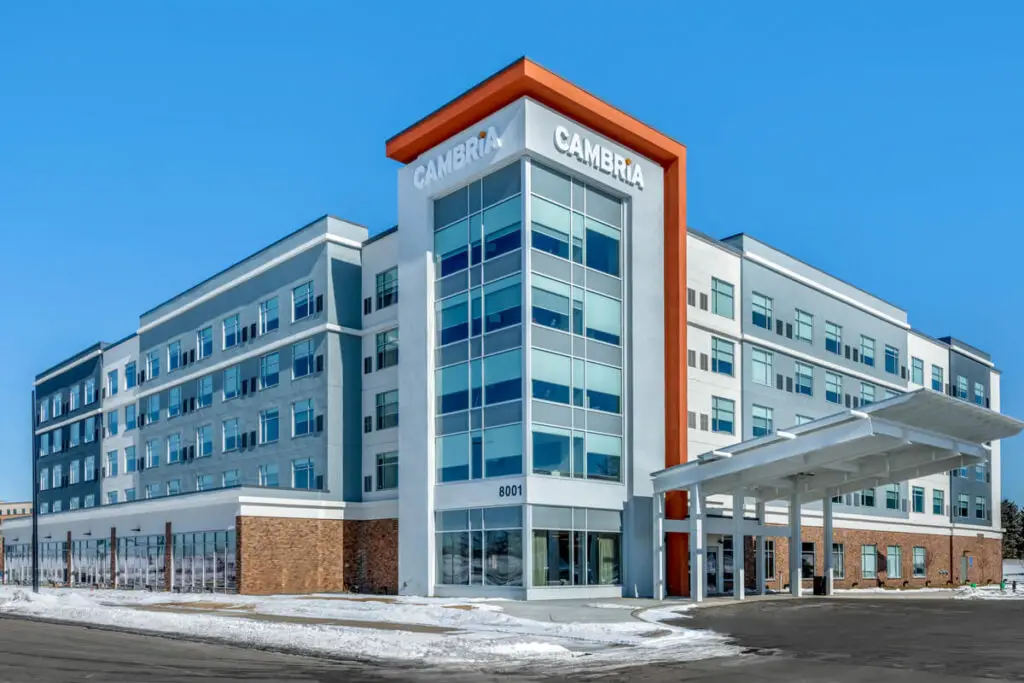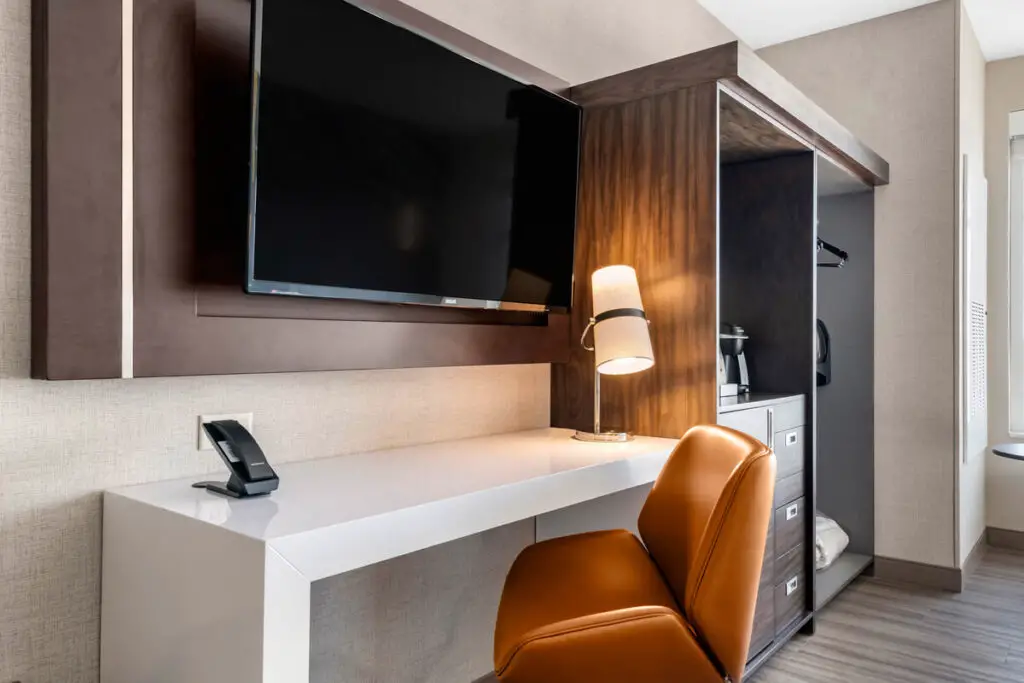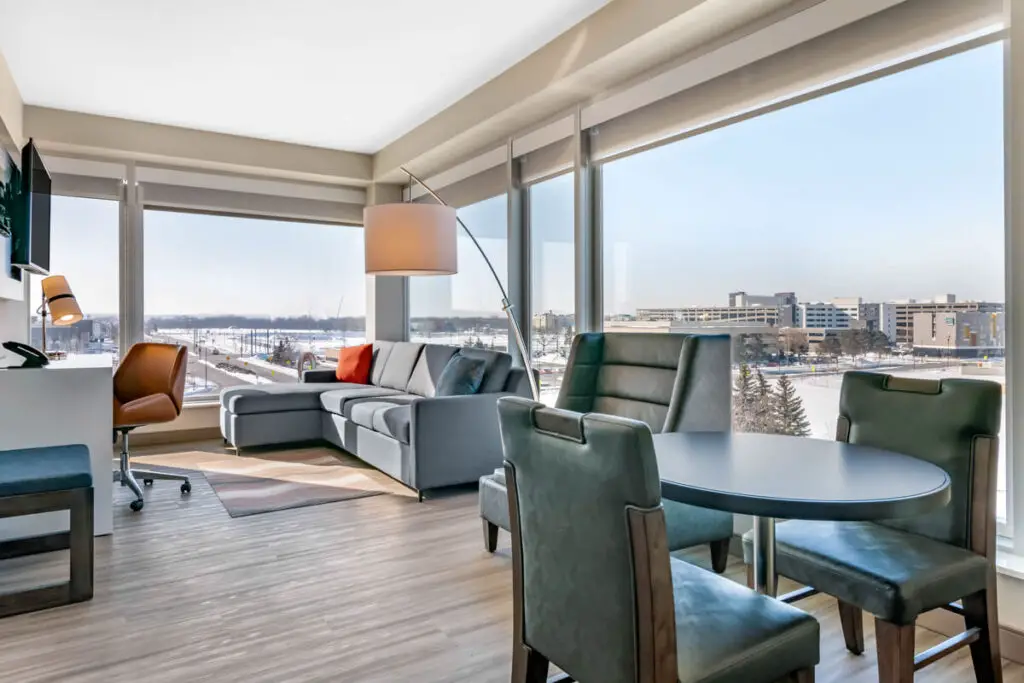
For the last few decades, hotels have been trying to make a room-away-from-home feel more like, well, an actual home. The trend of extended stays in hotels started back when business workers realized that they wanted something that felt more like an apartment with a nice home-cooked meal to boot. The reason for this? Some of us prefer to stay for several days in a hotel and hang out in the room itself.
During the pandemic, the concept of staying for longer periods has become even more critical because we can’t work at coffee-shops or libraries.
Recently, I stayed at the Cambria Hotel Bloomington Mall of America in a suite that felt more like an apartment. (Full disclosure that I was given a press stay to check out the hotel and do my work for a couple of days.) My room had a hallway, a large bedroom, an eating area, and a living space. Most importantly, it also had a large work area with an actual, legit desk and a performance chair.

The idea is that you can live and work at the Cambria Hotel, not just stay there. One trend I’ve noticed with some hotels is that the rooms and amenities have shrunk dramatically in size (during one recent trip, the desk was about as wide as a washing machine). That’s not the case at the Cambria suite, everything is bigger and meant for you to stay in the room.
(By the way, that trend of relocating everyone to the common areas like bars and the lobby and out of your pint-sized room has not played out so well during the pandemic. I never did like the idea, since I’m a home-body by nature and like to stay in my room.)
So what is it like to work there? For starters, I loved the view. I can’t over-emphasize how the design of the actual suite in any hotel is so critical for your own productivity. All Cambria hotels have suites on the corner of the building with an array of windows. Being able to look out over the entire shopping mall area near Bloomington, Minnesota where I stayed meant I could glance at people milling around, watch the sunrise, and soak in the scenery.

That eating area is also ideal. When you are trying to actually work, the desk and performance chair are only half of the equation. There’s a full sink, microwave, table, and mini-fridge you can use to get snacks or make meals, then get back to your projects.
A few of the “extras” in the room were quite surprising. In the bathroom, there’s a Bluetooth-enabled mirror. I connected my phone and then played a podcast while I was getting ready. There’s a finger-touch control on the mirror to turn it off and on. I’ve never seen anything like that, and I’ve stayed at many swanky hotels in Las Vegas over the years.
I wished the Wi-Fi was a tad faster, although when I wanted to stream a 4K movie I connected to my phone instead. I think all hotels suffer from Internet woes. In an age when we really need incredible speeds for cloud computing and backups, most hotels are offering high-speed gear more for simple browsing and email. To feel more like an apartment, I’d prefer a fiber connection. That’s expensive and a major upgrade for sure.
Here’s the real clincher, though. With the multiple rooms, the easy access to making food, the performance chair, two HD televisions — I was incredibly productive. I could focus on my work without getting distracted or (worse) feeling like I’m pinched into a shoe box. Hotels have finally figured out that some of us (most of us?) actually prefer staying in our rooms.
